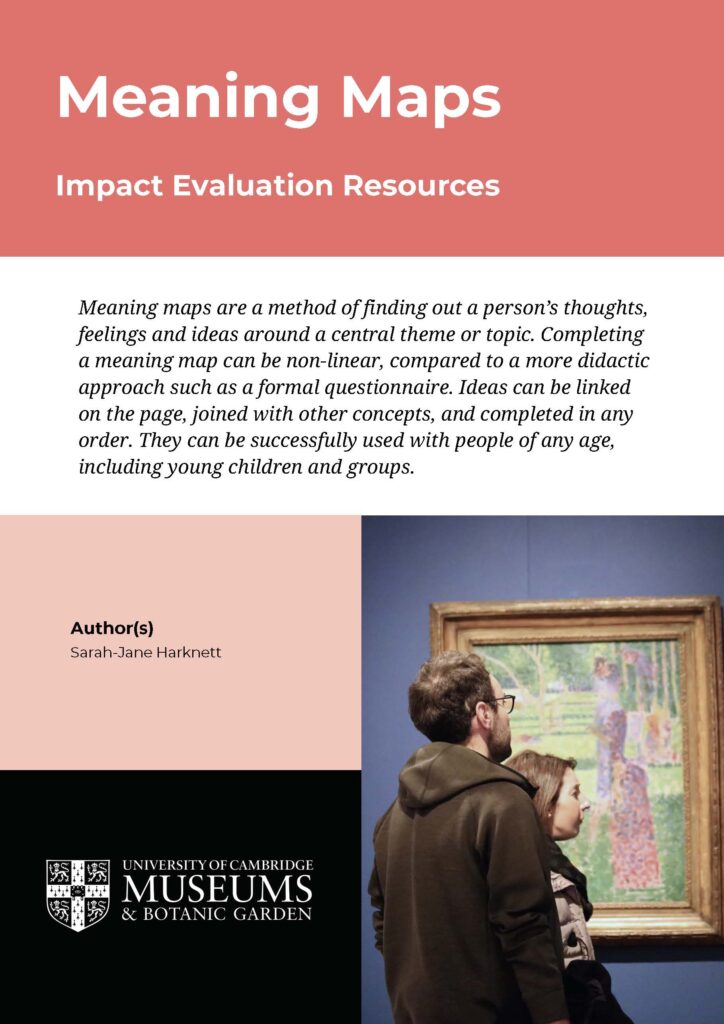Find out more about people’s thoughts, feelings and ideas around a topic with this resource on effective evaluation through meaning maps.
Meaning maps are an interesting way for people to tell you their thoughts, feels or ideas around a topic. They are especially useful to measure what happens before or after an experience or intervention and can be adapted to be used with people of varying ages or abilities.
Our Impact Evaluation Resource guides you through the whole process, from planning your evaluation through to what to do with the data. The full resource is available to download at the bottom of this page.
To create the template for a meaning map, you first chose the theme, word or picture that you would like the evaluation participants to respond to. This goes in the centre of a piece of paper. The person who is taking part in the evaluation adds to the page the words, phrases, drawings or emotions that they associate with that central idea. You might have to remind people that they are not being tested and that there are no wrong answers! You could use this evaluation method both before and after the participant goes to a workshop, visits an exhibition, or takes part in a learning experience. If you are using meaning maps for both before and after an intervention, give the person a different colour pen to add more ideas to the same sheet after the experience that is being evaluated. Don’t let them take the paper with them, the idea is that they complete it at the end of their visit.
Meaning maps can give you lots of information if you use them both before and after something you are evaluating, but because they are not very structured, they are also a good way to find out baseline information about what people think or know about a specific topic. They can give you too much data, though, and this can make them hard (and time-consuming) to analyse. You can use them with children or adults, or even groups.
If you would like to learn more about carrying out your own study with meaning maps, download our Impact Evaluation Resource, which includes information on how to do it, some basic ideas of what to do with the results, ethics, safety and security and a helpful list of further reading.
If you have any questions, or would like any support or guidance on your own evaluation projects, please feel free to get in touch: info@museums.cam.ac.uk

